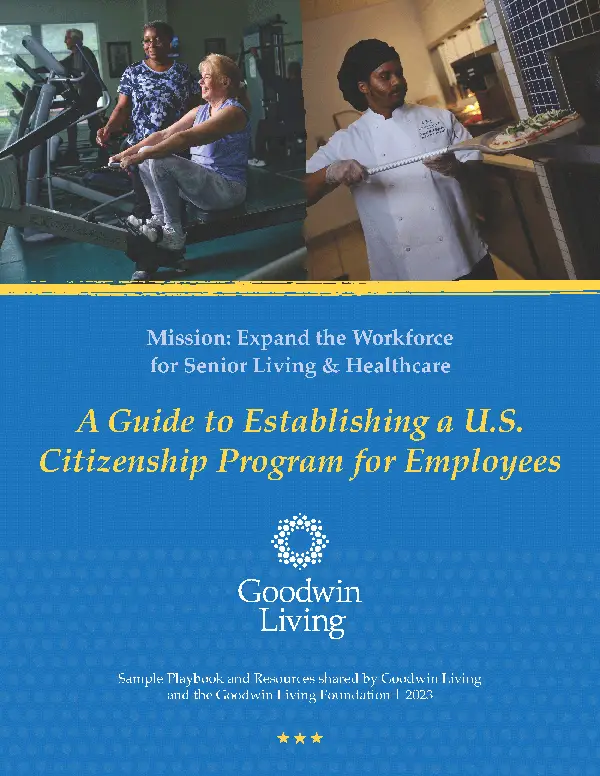
Live Wisely - November 30, 2021
By Kathie Miller
Insurance touches many aspects of our lives. From coverage that protects our cars, our homes and our health, most of us are familiar with the general concept and how it works. What many often struggle to fully understand is long-term care insurance (LTCI) and the important role it can play.
November is Long-Term Care Awareness Month, so we thought we would provide some frequently asked questions to help you better understand this type of insurance and the importance of planning for your future.
One of the biggest misperceptions is that Medicare covers the costs of assisted living, memory support and nursing care when we need it. Medicare and other medical insurance plans cover just that – medical costs such as doctors’ visits, hospital stays, medications, post-acute therapy and ambulance bills.
Should we find ourselves in need of assisted living, memory support or nursing care, we also face costs associated with helping us tend to our personal care needs. Within senior living and healthcare, we use the acronym ADLs, which stands for Activities of Daily Living. ADLs are basic functions that most of us take for granted – bathing, dressing, eating, using the bathroom.
We all find it impossible to think there might come a time in our lives when we need help tending to these very basic tasks associated with daily life. Yet this is where long-term care insurance is key.
This special type of insurance covers the costs of some or all of the services provided in residential communities that offer assisted-living, memory support and nursing care. Within these settings, residents receive assistance with their ADLs. The level of assistance provided is based on the individual needs of each resident, and the level and type of assistance needed will determine where someone resides—assisted living, memory support or nursing care.
In some cases, long-term care insurance policies also provide coverage for adult day-care services and in-home care. Policies will vary, and costs of insurance premiums will vary based on the types of coverage you choose.
If you already have LTCI, take time to review your policy closely to understand what coverage it provides for you. If you do not already have LTCI, Goodwin Living At Home (GLAH) might be a good solution for you. GLAH functions similarly to long-term care insurance but offers many more benefits and also has options for anyone who is age 55 or older. GLAH can also fill gaps in coverage left by many traditional LTCI policies.. Many of our members already have LTCI but opt to add GLAH to their long-term plans to age safely, securely and affordably in their homes for as long as they wish to stay there.
We would need a fortune teller to answer this question, though statistics can help shed light on this for us. While several factors contribute to your chances of needing long-term care, the U.S. Department of Health and Human Services estimates that 70% of those ages 65+ will need long-term care. The data also indicates that 20% of those ages 65+ will need care for more than five years.
Truth of the matter is, anyone could find themselves needing help with daily activities, due either to an unexpected, sudden change in health (perhaps due to a fall or stroke or new diagnosis of a chronic disease) or to simply living a long, full life that leads to loss of mobility and vitality. This can happen to any of us. Planning for the possibility of it happening to you is important to ensuring a safe and secure future.
Securing long-term care insurance can go a long way to help defray the costs. The basic principle is the same as the one that applies to any insurance plan: Pay now, benefit later.
It is important to note: You cannot wait until you need help to think about long-term care insurance. You must qualify for coverage.
According to Genworth, these were the national averages in 2020:
Within the greater Washington, D.C. area, these are the average 2020 costs:
Actual costs will depend on the level of care you need, though these averages provide a good starting point to use as you make your own plans.
These costs can be offset considerably if you have long-term care insurance. Of course, you will want to factor in the costs of insurance as you consider all your options. How much you will pay for your policy will vary. Your age and gender will factor into the costs, as will the type of coverage you decide to include in your policy. AARP offers a calculator that might be useful as you explore your options.
Deciding to purchase long-term care insurance can provide financial security. Making LTCI part of your ongoing planning provides peace of mind for ourselves, as well as our families and friends who want to help when we need it. With insurance, you pay for future costs now and provide greater financial security for yourself and your loved ones.
Goodwin Living At Home is a continuing care at home (CCAH) program. Based on care and services provided in continuing care retirement communities (CCRCs)—now called Life Plan Communities—most CCAHs offer plans that provide both coverage for future costs of care, as well as care coordination from an expert.
What makes GLAH and other CCAH programs stand apart from long-term care insurance is the personal care you get from the program. LTCI functions like most insurance programs—you have a life event that qualifies you to file a claim and once that claim is approved, you begin to receive payments based on the coverage provided by your policy. With GLAH, you work directly with a Members Services Facilitator who sits with you to make a plan, checks with you regularly to ensure all is well and ensures your plan moves to swift action should the needs arise. This is personal care and attention you would never rehttps://www.goodwinliving.org/age-in-place/personal-services/ceive from a traditional LTCI program.
Choosing Goodwin Living At Home in addition to or in place of a traditional long-term care insurance policy will secure personalized attention from caregivers, health professionals and a Member Services Facilitator to coordinate your changing care needs.
Most people join our Life Plan Communities when they are still independent. What appeals to most residents is the reassurance they get from knowing they have access to other living options should their needs change. Long-term care insurance applies to assisted living, memory support and nursing care at both of our communities. When residents who have LTCI choose to transition to these living levels, they can rely on their insurance coverage to help pay for costs.
We offer financial contract options that account for LTCI coverage. We also offer Life Care contracts, which is one unique quality about Goodwin Living Life Plan Communities. Life Care contracts are structured financially to provide stability in monthly costs; under our Life Care contracts, your monthly fees will not increase as a result of you deciding to transition to assisted living, memory support or nursing care.
Reading this blog is an excellent start as you consider your future plans. If you want to take your planning further, contact us today and we will be glad to put you in touch with a counselor who can discuss your options, whether you seek community living or prefer to age in the home you love.
As Corporate Director of Marketing & Communications, Kathie Miller provides strategic guidance and tactical support for all areas of Goodwin Living. She writes, edits and manages The Good Life blog and newsletter. Kathie joined GHI in 2014 after nearly 15 years at NPR, where she honed her skills in brand and reputation management, content marketing and internal communications. Originally from Pennsylvania, Kathie has slowly come to realize she’s lived in Arlington for more than half her life and should call herself a Virginian. She enjoys the outdoors and brings her rescue dog, Remi, to work every day.
